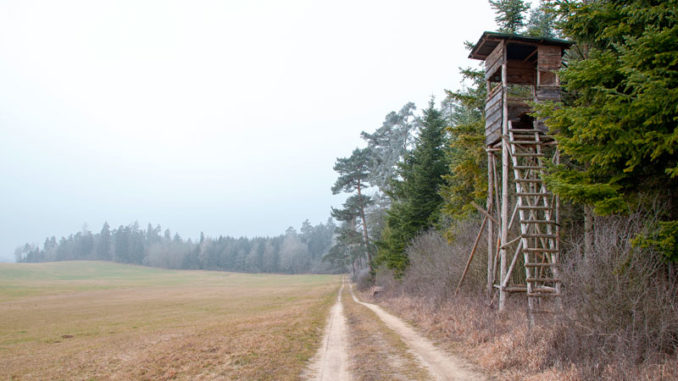
I hate January.
It’s cold, usually, and damp, usually, and it always follows what usually is a joyous December and ushers us into another year of unknowns.
That’s why this month has its name: it’s from Janus, the two-faced Roman god. One face looked backwards and the other forward.
My extreme dislike for these 31 days is more than weather and residual emptiness from the holidays.
Except for a few archery days, deer hunting ceases.
And whether or not you had success in your favorite duck hunting locale, mornings allowed in a duck blind are about over for another seven-plus months until the special teal season comes in September. Oh, yeah, there’s a one-day youth-only/veterans-only duck day Feb. 4 in Louisiana’s East Waterfowl Zone. But most don’t get to count that one.
There are a couple of goose-hunting days left before the Conservation Order runs into early March (but only if blue, snow and Ross’ geese haven’t left), and fields and forests are left for squirrel and rabbit hunters — and that’s a good thing.
Gun work
Still, it’s sad to put away that favorite waterfowl gun and a scoped rifle with the advice to clean and lightly oil — lightly — before you stow them safely (with gun locks) for months.
Oh, joy, forgot that turkey season and that May squirrel season might be reasons to keep those firearms handy (and with gun locks — get the message).
But, hunting is only the half of it: history tells us January is a gol-dangdest month to try to figure out fish — in salt, brackish and freshwater.
Water temperature, cold fronts, rain and sometimes ice and snow provide variables in coming up with a fishing solution. And fishing with numb fingers isn’t really fun anyway.
And, this year, when it comes to fishing along our coast, there’s sure to be new speckled trout regulations. By the end of the month, the Wildlife and Fisheries Commission will rubber stamp the Department of Wildlife and Fisheries-suggested 13.5-inch minimum size for “keeper” specks and a new 15-a-day creel limit.
Hard to figure
It was hard to figure why our seven-member commission swallowed this suggestion hook, line and sinker when evidence from other non-agency biologists suggested keeping the 12-inch minimum size and possibly reducing the daily creel to something lower than 15 fish.
The 13.5-inch proposal appears to have come from a hard push-back from fishermen from a 14-inch minimum size — and LDWF biologists even went to the point of telling us Florida has a 13.5-inch minimum on its flounder take. Don’t ask me.
This new minimum, state biologists said, will give the bulk of female trout at least one and two spawning cycles.
The non-agency biologists consulted said this new minimum would put increased pressure on spawning-sized trout and defeat the purpose of any increase in minimum size.
Only time will tell. You expect things like this to come down in January.
Now, after December’s commission meeting and the news our redfish stock is in trouble, 2023 brings the promise of another coastal fisheries debate.
Full explanations of this revelation would take half this magazine to outline, but with redfish being the only coastal gamefish therefore reserved for recreational fishermen only, the inference from testimony before the commission laid this problem at the feet of recreational anglers.
That’s hardly the case.
The current 16-inch minimum for “keeper” redfish along with the five-per-day creel — and the limit of one redfish measuring more than 27 inches — comes from three years of debate in the commission and in our state legislature. Before that, redfish had a 50-per-day limit in an aggregate with speckled trout, and before that an unlimited catch.
But we remember hearing in the legislature’s Natural Resources Committee, LSU professor Richard Condry testified that the stock could be rebuilt rapidly with creel reductions. By the mid 1990s, he was right.
Now factor
Condry said more, and his words then are a “now” factor. He said if Louisiana’s coastal marshes continued to decline, and were not rebuilt in some way, shape or form,all fish species in our fish-rich waters would collapse.
See, it’s our marshes “edge effect” that makes our coastal waters so productive. You can’t blame that on recreational fishermen.
During recent commission meetings, Commission chair Joe McPherson directed Wildlife and Fisheries’ staff to more or less object to the next major project that could help, the Mid-Barataria Diversion Project, which is designed to help restore marshes in the Barataria Basin.
There’s another factor: the current commission continues to protect the taking of millions of pounds of menhaden from our shallow coastal waters in the places where menhaden nets invade spawning areas for redfish and speckled trout. Again. Don’t ask me to explain. Ask them.
And what I’ve written recently stands: the commission will have to acknowledge these nets and that activity, in fact, cause damage to shallow water spawning and feeding areas for these popular species. There’s enough video evidence to support the moves by conservation groups to push the menhaden take farther into Gulf waters, as far as one mile from our coastline. This is a problem that goes way beyond January’s 31 days.
So, as we bid farewell to a controversial 2022, there’s more to come in 2023.